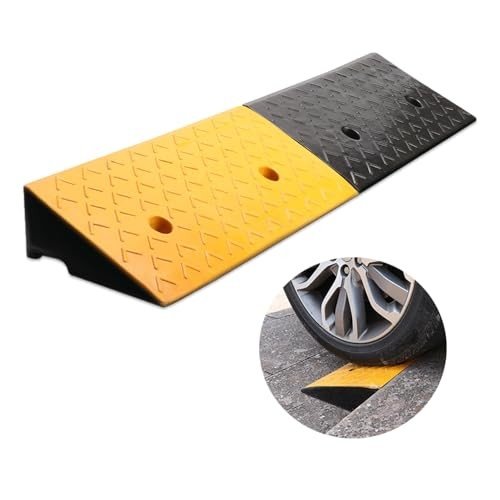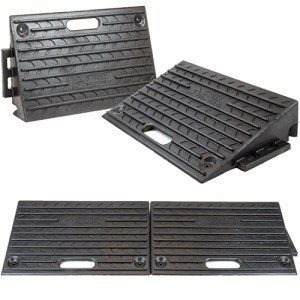
Disabled Ramps
Add a review FollowOverview
-
Founded Date May 11, 2018
-
Sectors ICT
-
Posted Jobs 0
-
Viewed 2
Company Description
What’s The Job Market For Ramps For Disabled Professionals Like?

Understanding Ramps For Disabled Accessibility: A Comprehensive Guide
In today’s world, guaranteeing ease of access for individuals with impairments is a vital aspect of neighborhood preparation and development. Among the important parts of availability functions is ramps, which supply a necessary ways of navigation for those utilizing wheelchairs, walkers, or just requiring an extra little bit of assistance. This post aims to supply an overview of ramps for disabled individuals, offering practical insights and guidance on their style, types, advantages, and finest practices, together with a detailed FAQ area.
The Importance of Ramps for Disabled Accessibility
Ramps play an important role in boosting the mobility and self-reliance of individuals with impairments. By making it possible for easier access to buildings, public areas, and transportation, these structures significantly lower the barriers that individuals might come across. Below are some bottom lines that highlight their value:

- Inclusion: Ramps promote an inclusive society, allowing people with specials needs to take part in daily activities, community events, and work.
- Security: They provide a more secure option to stairs, minimizing the threat of mishaps for both users with mobility difficulties and caretakers.
- Legal Compliance: Many nations have established laws and standards for accessibility (like the Americans with Disabilities Act in the USA), requiring the setup of ramps in public structures.
Table 1: Accessibility Legislation Overview
| Region | Legislation | Key Provisions |
|---|---|---|
| United States | Americans with Disabilities Act (ADA) | Mandates available styles for public areas and structures. |
| Canada | Availability for Ontarians with Disabilities Act (AODA) | Requires public-sector organizations to follow ease of access standards. |
| European Union | Accessibility Act | Develops typical requirements for ease of access across member states. |
Types of Ramps
Ramps can be found in numerous forms, each developed to suit specific requirements and contexts. Below are the most typical types of ramps used for disabled access:
- Permanent Ramps: Installed as a part of the building structure, often made from concrete or wood.
- Portable Ramps: Lightweight and developed for temporary use, commonly used for specific access to cars or events.
- Suction Cup Ramps: Used for mobility help, these ramps can be connected to automobiles, providing a versatile service for those who travel.
- Limit Ramps: Designed to bridge the gap between 2 surface areas at entrances or entry points, assisting in smooth transitions.
Table 2: Ramp Types and Features
| Type | Product | Best Use Cases | Pros | Cons |
|---|---|---|---|---|
| Permanent Ramps | Concrete/Wood | Public buildings/residential | Durable, low maintenance | Pricey to install |
| Portable Ramps | Aluminum/Fiberglass | Events/vehicles | Easy to transport | Might not support heavy weights |
| Suction Cup Ramps | Various | Cars | Versatile and adjustable | May need more maintenance |
| Limit Ramps | Rubber/Wood | Doorways | Basic installation | Limited height capacity |
Advantages of Ramps
The setup of ramps provides many advantages, as outlined listed below:
- Enhanced Mobility: Ramps permit users simpler motion up and down inclines, decreasing pressure and tiredness.
- Self-reliance: With the availability of ramps, individuals with mobility problems are most likely to browse their environments without assistance, enhancing their self-confidence and autonomy.
- Increased Opportunity: Accessible ramps ensure that individuals with disabilities can reach work environments, schools, and social areas, promoting more comprehensive participation in society.
Finest Practices for Ramp Design
Creating reliable and safe ramps requires adherence to specific standards and concepts. Here are some best practices to consider:
- Follow Accessibility Standards: Always seek advice from regional availability guidelines to ensure compliance with policies.
- Pick the Right Slope: The ideal slope ratio is typically 1:12 for wheelchair access. This indicates one unit of vertical increase for each twelve units of horizontal run.
- Non-Slip Surfaces: Use products and finishes that supply appropriate grip, particularly throughout wet or icy conditions.
- Add Handrails: Installing tough handrails on both sides of the ramp can supply additional assistance and safety for users.
- Regular Maintenance: Conduct regular evaluations to determine wear or damage and carry out timely repair work as needed.
Table 3: Ramp Design Considerations
| Style Aspect | Suggestion | Significance |
|---|---|---|
| Slope Ratio | 1:12 ratio | Makes sure ease of use for wheelchair users |
| Width | Min. 36 inches | Enables safe passage for users and caregivers |
| Surface area Material | Non-slip, long lasting material | Avoids mishaps and provides durability |
| Handrails | Minimum 34 to 38 inches above ramp surface | Offers extra assistance for users |
| Turn-around Space | Minutes. 5ft x 5ft for modifications in direction | Accommodates users to pivot safely |
Often Asked Questions (FAQs)
1. Who qualifies as disabled for ramp accessibility?
The term “disabled” differs throughout legislation and organizations. Usually, it describes individuals with physical problems that restrict their mobility or ability to navigate stairs, including those using wheelchairs, walkers, or other mobility aids.
2. Are ramps required in all public buildings?
Yes, a lot of countries mandate that public structures be accessible to individuals with specials needs through ramps, as laid out in ease of access legislation.
3. Can I develop my ramp, or do I need an expert?
While some property owners may choose to construct their ramps, hiring a professional with competence in ADA compliance is recommended to ensure safety and regional code compliance.
4. How do I preserve a portable ramp?
Routinely examine the ramp for indications of wear and keep it tidy from particles. Ensure that any movable parts work correctly, and shop it in a dry place to prolong its lifespan.
5. What is the average expense of installing an irreversible ramp?
The cost varies extensively based upon materials, style, and labor but can range from ₤ 1,000 to ₤ 5,000 or more depending on the website conditions and intricacy included.
Ramps for disabled people are a vital component in promoting accessible and inclusive environments. Understanding the types, benefits, legal implications, and best practices for ramps can contribute substantially to boosting the lifestyle for individuals with mobility difficulties. As neighborhoods continue to establish and customize their facilities, guaranteeing accessibility needs to remain at the leading edge of planning efforts, allowing everybody to browse their environments successfully. Awareness, education, and dedication to ease of access will lead to a more inclusive society for all.
